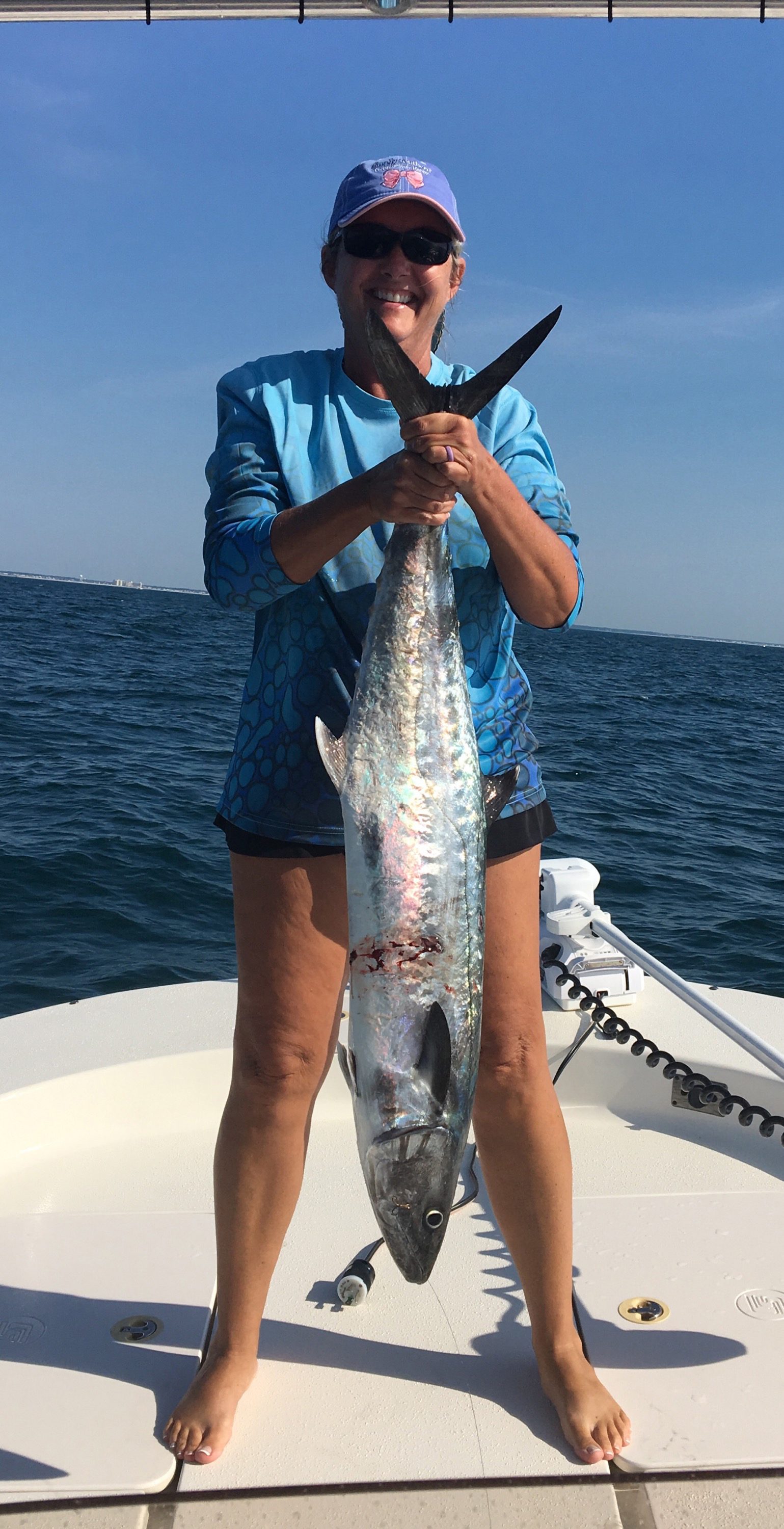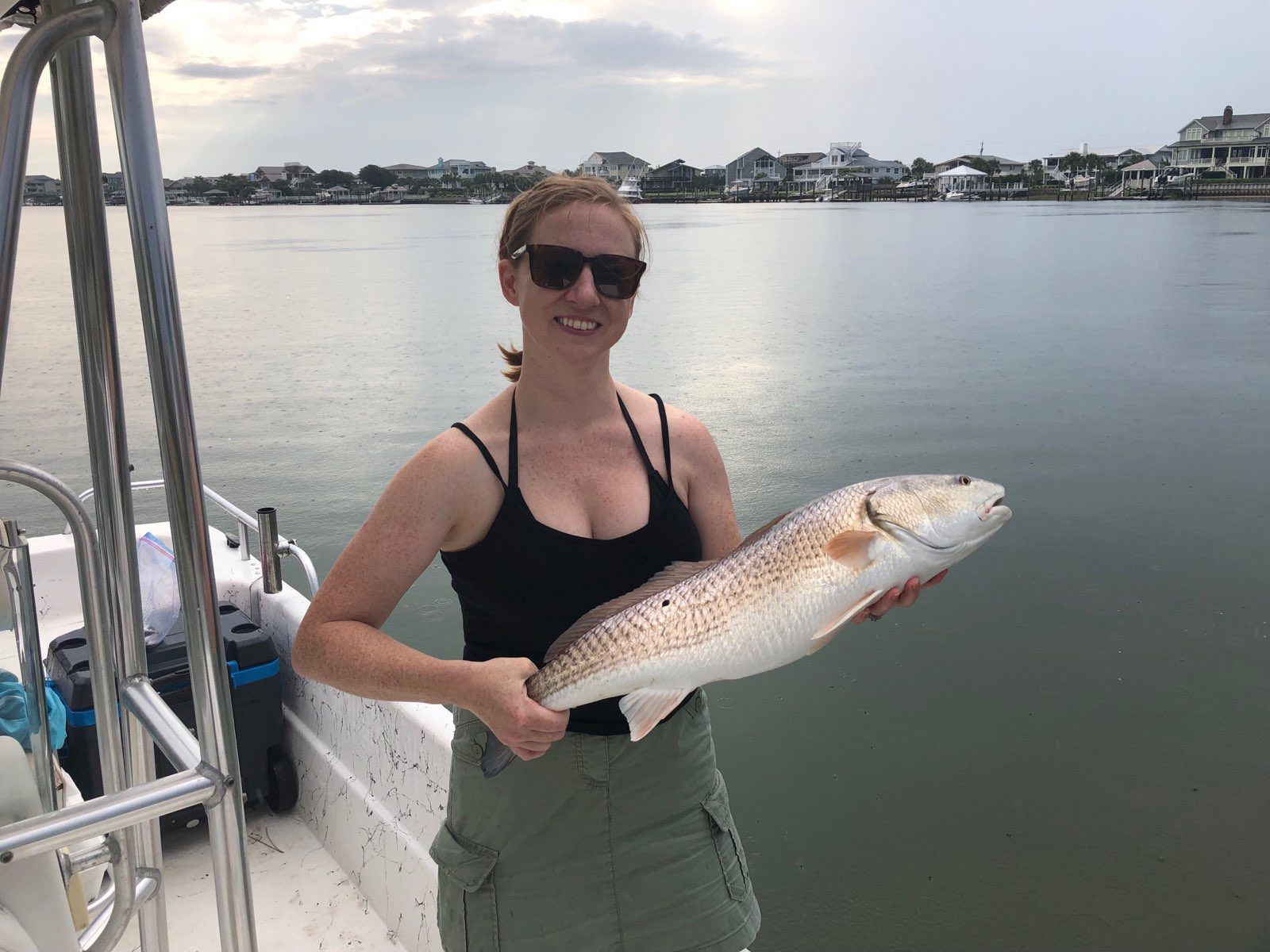Wrightsville Beach – July 18, 2019
Matt, of Tex’s Tackle, reports that fishing inshore has been good, with drum, flounder, and sheepshead being the most commonly targeted species this time of year. Docks in the waterway and in the creeks are a good place to find all three, especially where there is deeper water and current nearby.
Reds and flounder can also be found in the marsh near the inlets and behind the islands. You can’t go wrong with live mullet, but Gulp and Z-Man soft plastics have been producing a good number of fish, too. The reds have also been hitting topwater plugs, especially in low light conditions.
The sheepshead and black drum are mostly being caught on fiddler crabs, sand fleas, and shrimp.
There have been mixed reports coming in from the surf in the past few weeks. Red and black drum, whiting, pompano, and flounder have been common occurrences. Remember that fishing during the summer is often better during the cooler times of day or at night. Anglers fishing with large cut bait, especially at night, have been catching sharks and rays.
The spanish mackerel fishing has been hit or miss at the nearshore wrecks and ledges depending on the wind and tide, with a few great days and larger fish mixed in. Slow trolling live bait has been producing the bigger fish, but boats pulling Yo-Zuri deep divers and Clarkspoons with planers have been catching their share as well. The fish have also been hitting casting jigs, when you can find the spanish feeding on the surface.
Good numbers of big flounder, keeper gray trout, and mixed sizes of red drum have been biting at the ARs and ledges nearshore. A bucktail tipped with a Gulp or with a live mullet or menhaden is the best tactic. There are still a few cobia to be caught, especially near the inlets, around live bottom, and at the artificial reefs off the beach.
There’s been some decent fishing for mahi in the 15-30 mile range, including some 20+ lb. fish. Trolling with ballyhoo or squid has been the most common strategy. If you opt for lures, the Trident Lure Micros, Blue Water Candy Mahi Madness, and Monkalurs have all been drawing some attention.
Kings are being caught within a few miles of the beach, but the best fishing has been from 50-90’. Ballyhoo, cigar minnows, Drone spoons, bigger Clarkspoons, and live bait will all produce fish.
The gag grouper bite, along with beeliners, pinkies, and grunts, has been strong starting in about 80’. The reds and scamps can be found further offshore, along with good numbers of triggerfish. Throw out a light line while you’re bottom fishing for a shot at mahi and kings.
Gulf Stream trolling has been heavily dependent on finding temperature breaks and weed lines. If you can find them, then you’re likely to find plenty of smaller blackfin and mahi. There’s also been a handful of blue marlin caught over the last few weeks. During this time of year, the mahi, blackfin, sailfish, and wahoo will all spend some time on the inshore side of the break, so don’t be afraid to stop short.
The grouper fishing, along with plenty of amberjacks and a variety of snapper, has been great out in 200’.

Shannon Watkins with a king mackerel caught 10 miles from Wrightsville Beach on a cigar minnow.
Jamie, of Seagate Charters, reports that redfish are biting well throughout the area, with the biggest fish hanging out in area inlets. Live baits are producing the most action.
Flounder are biting strong all over the place, from the inshore creeks out to the nearshore reefs. Bucktails and Fathom scented baits are drawing just as many strikes as live baits, so pick your poison.
Some speckled trout are taking an interest in topwater baits, but the trick is to get out onto the water in the early morning.
Spanish mackerel have been dependable up and down the beach, with traditional spoon and planer setups (in addition to casting jigs) putting the most fish in the boat.
Trevor, of ProFishNC Charters, reports that inshore fishing is good when concentrating on creek mouths during lower tides, but a lot of weekend boat traffic can make it hard to get in a good, calm spot.
Fishing whole blue crabs on the jetties has produced some huge sheepshead.
Nearshore flounder fishing has picked up, with Carolina-rigged finger mullet being key. Drifting over the 2-5 mile live bottom areas has produced a lot of flatties and a few small cobia.
Spanish mackerel are active in 28-45’ of water, while kings are in the 5-15 mile range. There has been an incredibly strong banded rudderfish bite between 3-5 miles.

Amy Fedoronko, of Burgaw, NC, with a red drum caught at the Masonboro jetties using a live mullet minnow on a Carolina rig.
Rick, of Living Waters Guide Service, reports that offshore fishing has been productive, with mahi and billfish coming from the Steeples and Same Ole areas. Looking for weeds and color change will increase your chances of finding fish.
Bottom fishing for grouper has also been good in the Steeples and Same Ole areas. The deeper you go, though, the more species you’ll find. In depths of 100+, you’ll find reds, gags, pinkies, scamps, grunts, beeliners, and triggers. Squid and cigar minnows are producing the most bites.
Fishing for kings has been productive in 70-100’ of water, and there are still some mahi and sailfish in the mix. The kings will fall for live menhaden.
Gabe, of Johnnie Mercers Pier, reports that flounder, red and black drum, and spanish mackerel have all been coming in. The flatties and reds (which have been slot to over-slot) have been eating mud minnows and shrimp. The black drum are biting at night, but a lot of sharks have been chasing them around so reel the fish in quick.
